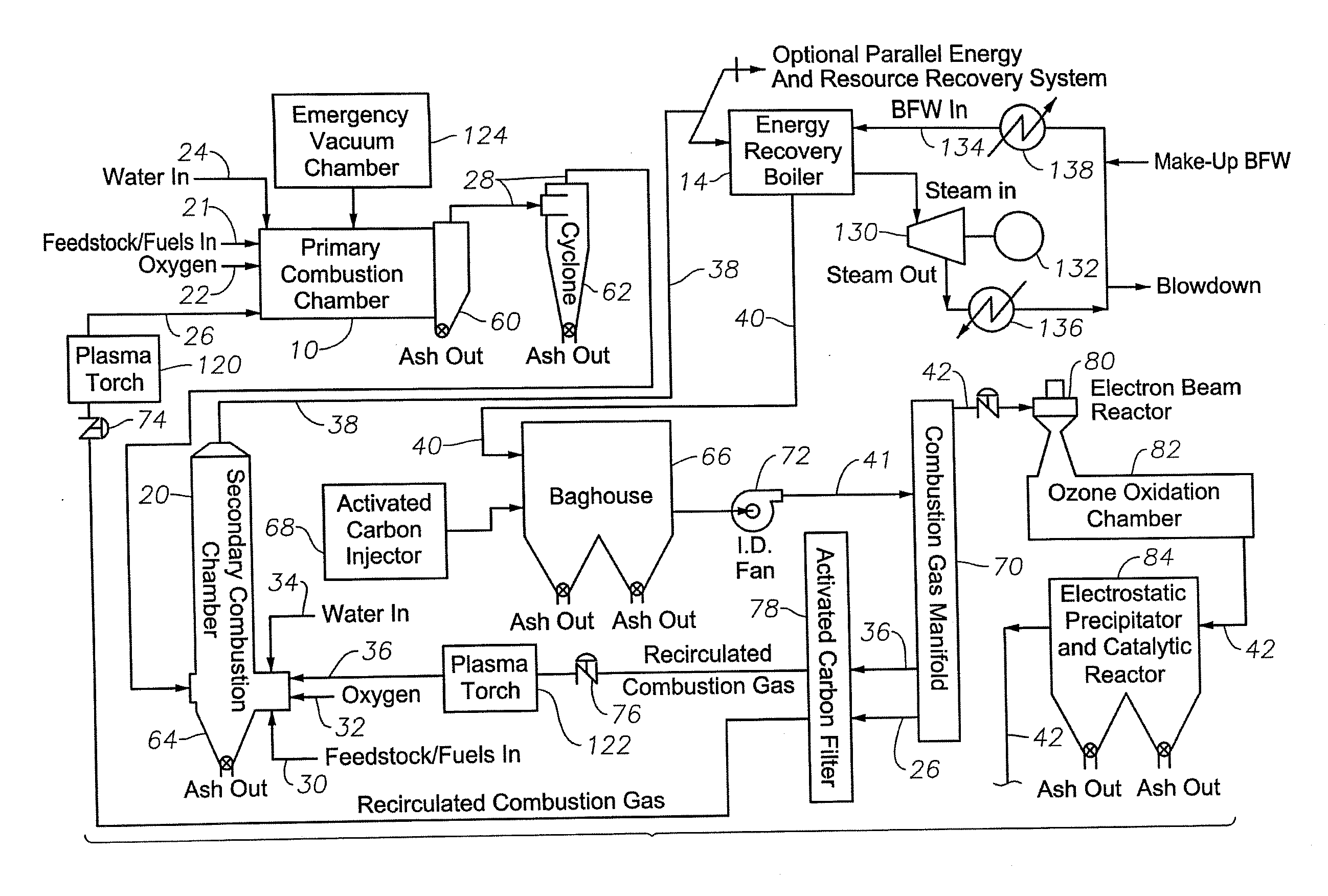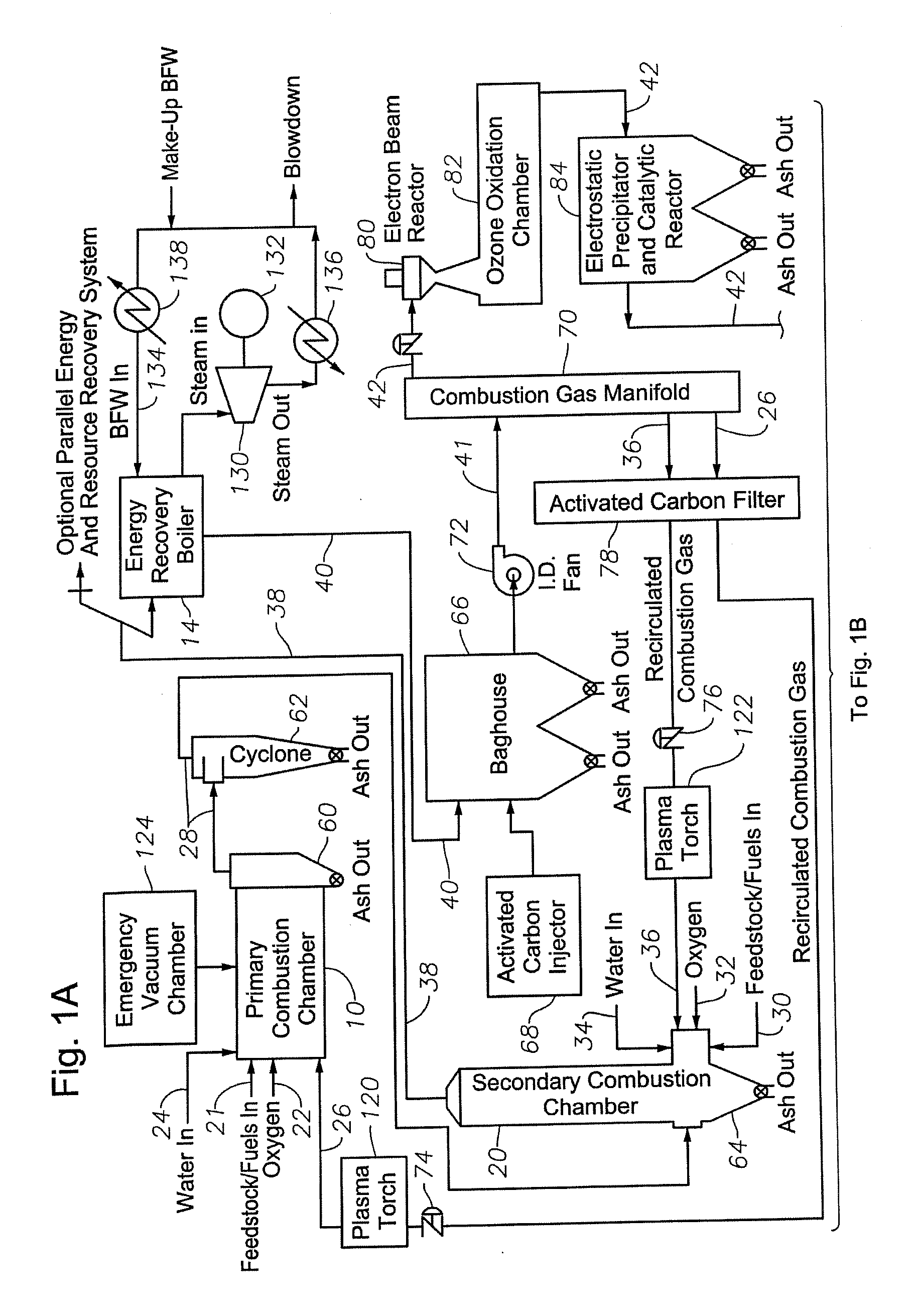Reduced-emission gasification and oxidation of hydrocarbon materials for power generation
a technology of hydrocarbon materials and oxidation, which is applied in the direction of combustible gas purification/modification, combustible gas production, and separation processes, etc., can solve the problems of high temperature hydrogen production, low gasification production of dioxin, etc., and achieves less feedstock conversion, high combustion temperature, and high boiler efficiency.
- Summary
- Abstract
- Description
- Claims
- Application Information
AI Technical Summary
Benefits of technology
Problems solved by technology
Method used
Image
Examples
Embodiment Construction
[0022]In a preferred embodiment of the invention, as illustrated in FIGS. 1A and 1B, a reduced-emission system and process optimizes hydrocarbon feedstock utilization for the generation of electrical power and marketable products. Generally, the system and process comprise a primary combustion chamber 10 and secondary combustion chamber 20 for gasifying and oxidizing, respectively, the hydrocarbon feedstock 21 to carbon dioxide, water, and energy.
[0023]As illustrated in FIG. 1A, the process of a preferred embodiment of the invention begins by introducing a feedstock stream 21, oxygen stream 22, and a water stream 24 into primary combustion chamber 10. Feedstock stream 21 can be a variety of hydrocarbon feedstocks, including natural gas, coal, biomass, and other hydrocarbon-containing compounds. Within primary combustion chamber 10, the hydrocarbon feedstock 21 is converted to carbon dioxide, methane, carbon monoxide and hydrogen via the following three principal chemical reactions, ...
PUM
| Property | Measurement | Unit |
|---|---|---|
| temperatures | aaaaa | aaaaa |
| temperatures | aaaaa | aaaaa |
| temperature | aaaaa | aaaaa |
Abstract
Description
Claims
Application Information
 Login to View More
Login to View More - R&D
- Intellectual Property
- Life Sciences
- Materials
- Tech Scout
- Unparalleled Data Quality
- Higher Quality Content
- 60% Fewer Hallucinations
Browse by: Latest US Patents, China's latest patents, Technical Efficacy Thesaurus, Application Domain, Technology Topic, Popular Technical Reports.
© 2025 PatSnap. All rights reserved.Legal|Privacy policy|Modern Slavery Act Transparency Statement|Sitemap|About US| Contact US: help@patsnap.com



